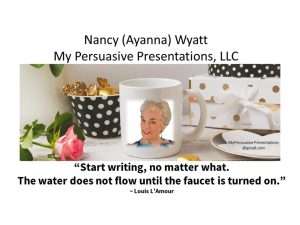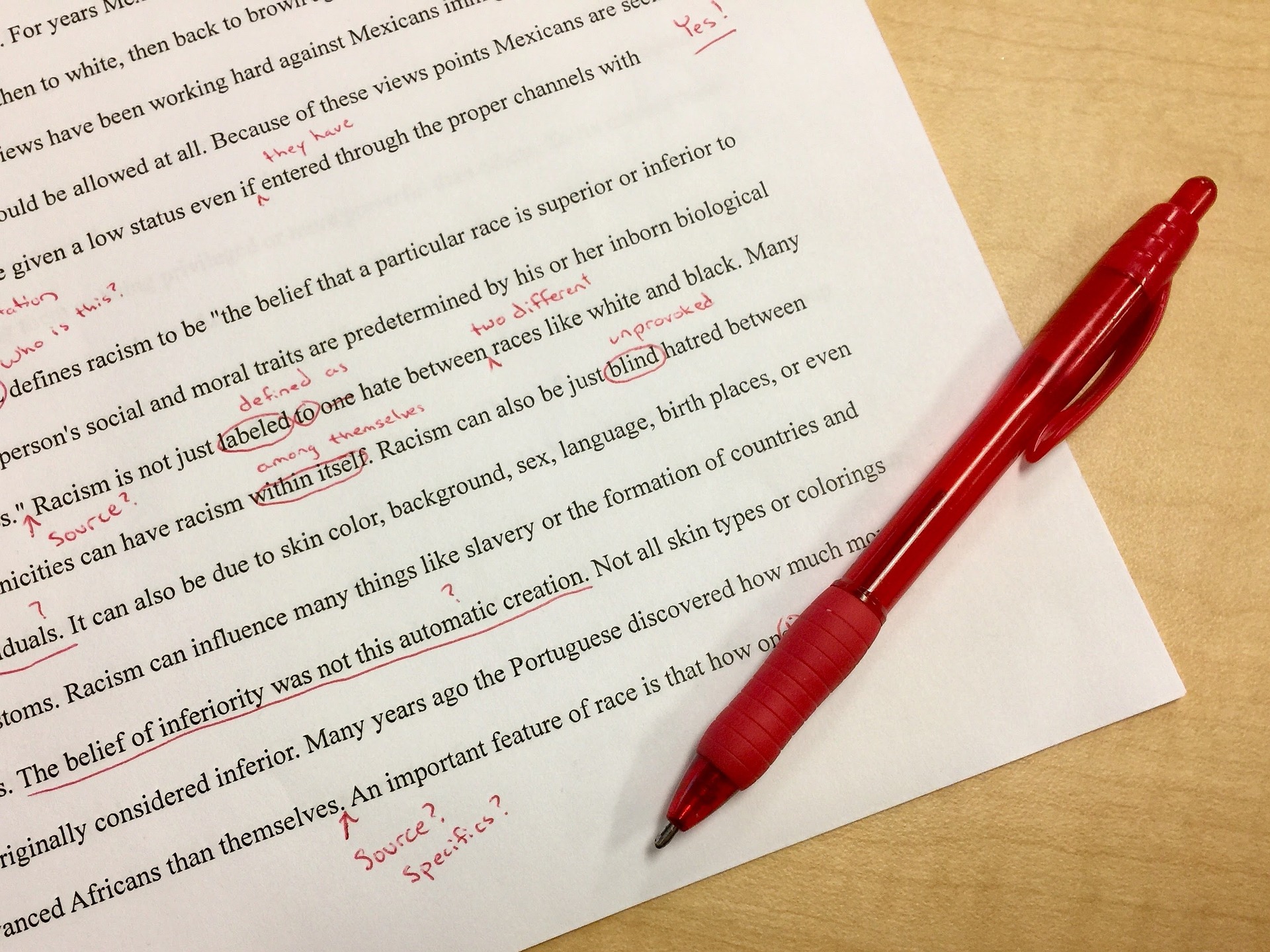 TIPS FOR EDITING ANYTHING ~
TIPS FOR EDITING ANYTHING ~
BUT ESPECIALLY MANUSCRIPTS FOR PUBLICATION
~ Part One ~
When you can afford to do so, it’s wise to hire professionals to do the various kinds of editing needed for publishing written work. They can be more objective in seeing flaws of omission and commission. Click Here for details about different kinds of editing, or read this short excerpt about why you may wish to engage editing experts. Then, quickly, we’ll cover the first things to do in evaluating and editing your manuscript (for a book, presentation, article, blog, play, etc.).
Most of the principles are the same, regardless of the type of work to be published.
Copy Editing Is Not Just Proofreading or Correcting Spelling and Grammar
I bet most of you didn’t know there are several different forms and levels of content editing and copy editing, some of which require different skills from others. Hint – proofreading is not the same as copy editing.
Why Should YOU Learn This
or Use This Page for Reference?

Here are a few reasons.
- You might wish to hire an editor, but all you can afford is a reviewer, and you don’t know the difference.
- You might want “a pair of fresh eyes” to review a project on which you’ve been working SO HARD that you no longer can see errors in logic, construction, spelling, grammar, and word usage.
- Perhaps you composed a document that is critical to your success, and it must be perfect.
- If you’re not a pro or did not excel in writing the English language, you may not know when something IS an error, especially if it reflects how many people speak in casual conversation!
- You might wish to become a professional editor.
For this discussion, let’s pretend that you must do it yourself from start to finish.

Step One: Read the Whole Thing Without Making Corrections
Read as much as you can in one sitting. The first review of your text will be an “overview” – like looking at a mountain from afar, versus paying attention to every tree, river, bird, animal, and insect on the mountain in front of you.
Next time (in Part Two), I’ll share some ways to make many small changes to a text in an easy way while you’re editing. You might breathe a huge sigh of relief! But, in this blog, we’re going to concentrate on the “Big Picture.”

Do your best to distance yourself from the content and to read the manuscript as if you were a stranger reading the material for the first time.
Try not to judge it, but see if it flows smoothly, makes logical transitions, and uses words and references to things that will be understood easily by your target audience. Contrarily, if you want the work to be timeless, don’t use language or references that are likely to be simply a fad or understood only by “insiders” unless those are your objectives.
You can make notes, if you need to, but don’t change anything in the manuscript when you read through the material for the first time. Otherwise, you could change something in an early section that renders a later section incorrect or illogical, making an outcome unlikely, irrelevant, or out of character.
Also, you’re likely to have “afterthoughts” or new insights later. Put those into separate notes.
Give the Seeds Time to Grow Unimpeded

If you don’t have a deadline that dictates quick completion, it’s wise to set aside the manuscript for a few days after you’ve read the whole thing. If there is time, you might set the work aside for a time between each kind of editing.
Let the concepts “percolate” through your mind, even as you do dissimilar things, like chores, listening to music, or attending unrelated events. You’ll probably find that ideas, inconsistencies, and “aha moments” come to you as your subconscious unearths things your brain might have missed the first time around.
The less you start consciously making changes right away, the more likely you are to find little seeds that germinate new ideas and come to the surface. Just as in nature, seeds don’t become plants if they’re constantly dug up for viewing.
You can make notes, but let your intuition have quiet time and space to flourish and rise to your attention. You might even dream of something that would make the material fresher or change course for the better!
Step 2: Start with the Big Stuff
Some folks will stop reading your work as soon as they see an instance of spelling or grammatical error. (I tend to be one of those folks.) Therefore, we’ll give some tips for that kind of editing in my next blog. However, we’re going to start by evaluating the overall quality of the content.

Address the large, structural issues first.
- For example, have you found that there are big inconsistencies in events, characters, facts, or plot lines?
- Are there themes, arguments, characters, or plot lines that lack depth, clarity, believability, or factually-based truths (where applicable)?
- Does quality research support the findings that you submit as true?
- Are you clear in the language and content by using words, phrases, examples, and styles that are best suited to your target audience? Have you DEFINED a target audience?
Characters

In fiction, are the thoughts or actions of primary subjects in stark contradiction with their established character, belief systems, motivations, or ability to take the action described? If yes, you need to add something to explain how the character made such a drastic switch. That could come in the form of adding (or subtracting) an event, providing new information that gives a character a new worldview or motivation, or whatever can make that out-of-character act seem authentic.
Similarly, ask yourself if there are characters, scenes, or backgrounds that need to be embellished for the reader to understand and accept what you have ascribed to them.
Settings and Staging Directions

What about inconsistencies? Have you placed an event in Fall with Autumn leaves falling onto the ground, and then posed a supposedly concurrent event in the same geographic location as being in summer heat and greenery?
More About Visuals
Further, if your work is being converted to video or film and you are being asked to review it, are you attentive to details? Here are a couple of examples.
- Where people or animals are trekking through snow, are there footprints where they have walked?
- Was the wedding ring on the wrong hand – or was it present in some instances and missing in others, despite the fact the characters did not divorce?
- Does the actor’s accent change when speaking in different scenes?
Note it. Fix it. Fix it in the original writing, in a critique, in stage directions, or in whatever way best suits your project.
Pacing

Does your writing flow, or is it “choppy” and inconsistent? Do some scenes last for 60 seconds and others for ten minutes? Is there a consistent pace that an editor can use to make scenes of a play or chapters of a book of fairly equal length? Note: you don’t have to be a slave to timing – like ensuring each act of a play lasts for the same amount of time. However, people are reactive and responsive to rhythm and cadence, whether in speech, music, or various other forms of writing and speech.
Why Would Anyone Care?

It seems to be especially difficult for writers of autobiographical work to distinguish between what is relevant and interesting to an audience and what is boring detail that could lead them to quit reading. What is interesting to you may be total “fluff” or mind-numbing to an objective reader. Cut out the superfluous details and enhance the depiction of salient points or pertinent descriptions.
This concept applies to more than writing. It matters in conversations, too, so we don’t bore our listeners, potential customers, or potential investors!
For example, when I ask a person about their trip to an overseas country, I do not want to hear about transportation difficulties, just like they describe the daily commute to work.
I want to know about unusual experiences or about the unfamiliar culture, customs, and things they learned that resulted in changes in their perspectives resulting from a new, expanded awareness of how others live and think.

Monologues and Dialogues
If you are writing dialogue, be true to the idiomatic way of speaking in various geographic locations. Ensure the characters speak and act consistent with their educational and cultural backgrounds and experiences.
For example, I have held managerial positions in corporations, and I have volunteered in prisons and shelters. Consequently, I speak ‘board room,’ and I speak “street” and can write in many voices.
Know the difference between what expressions would be used in various kinds of businesses or northern states versus what would be spoken in southern agricultural states, or sports vernacular, or in poverty-stricken inner-city environments.
This may involve some research on your part, as you are investigating not only the wording, but the way people in those various segments of society typically think.
Let’s Talk – Complimentary Sip & Share Session


I hope this is helpful to you. In Editing Anything – Part Two ~ I’ll share some tips that saved me oodles of time and effort in making corrections to common mistakes. Stay tuned. In the meantime, if you would like to ask me questions or discuss utilizing me for writing and editing projects, we can schedule a FREE initial consultation. I call them Sip & Share Sessions on Zoom, and I’d be happy to help you.
To arrange a session, email me at MyPersuasivePresentations@gmail.com and put Sip & Share re Editing in the subject line to get my attention quickly. We’ll coordinate schedules and have a little chat – without any sales pressure from me. (I’m not scary.) Let’s talk!

Do It the Write Way! Let My Fingers Do Your Talking!

